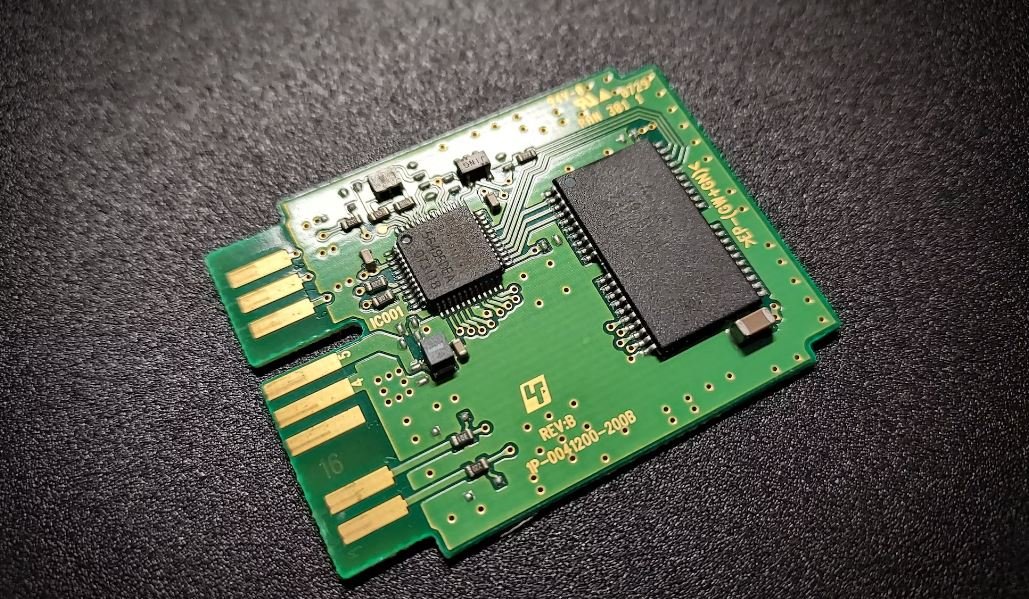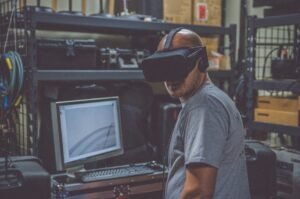Language Processing Centers
Language processing centers are areas of the brain that are responsible for the comprehension and production of language. Located primarily in the left hemisphere for right-handed individuals, these centers play a crucial role in our ability to understand and communicate through language.
Key Takeaways
- Language processing centers in the brain are responsible for language comprehension and production.
- These centers are located primarily in the left hemisphere of the brain for right-handed individuals.
- Damage to language processing centers can result in language disorders such as aphasia.
In the human brain, language processing centers are primarily located in two key regions: Broca’s area and Wernicke’s area. **Broca’s area**, located in the posterior part of the frontal lobe, is associated with the production of language. It plays a crucial role in formulating grammatically correct sentences, word articulation, and language fluency. *Interestingly, damage to Broca’s area can result in a condition called expressive aphasia, where individuals struggle to express their thoughts and produce coherent speech.*
On the other hand, **Wernicke’s area**, situated in the posterior part of the superior temporal gyrus, is responsible for language comprehension. It helps in processing spoken and written language and allows us to understand and interpret the meaning of words. *Damage to Wernicke’s area can lead to receptive aphasia, where individuals struggle to comprehend and make sense of language, even though they can produce fluent speech.*
The Role of the Language Processing Centers
Language processing centers work together to enable the complex process of language comprehension and production. Here’s a breakdown of their roles:
- Broca’s area: Responsible for the production of language, including speech articulation, grammar formation, and language fluency.
- Wernicke’s area: Involved in language comprehension, processing of written and spoken language, and interpretation of word meaning.
Language Processing Disorders
Damage to language processing centers can result in language disorders, known as **aphasia**. There are different types of aphasia depending on the affected area and the specific symptoms:
- **Expressive aphasia**: Also known as Broca’s aphasia, individuals have difficulty speaking fluently and forming grammatically correct sentences. They may struggle to articulate words but can understand and comprehend language.
- **Receptive aphasia**: Also known as Wernicke’s aphasia, individuals experience difficulty in understanding and comprehending language. Their speech may sound fluent, but it may lack coherence and meaningful content.
Tables: Language Processing Centers and Aphasia Types
| Language Processing Centers | |
|---|---|
| Region | Function |
| Broca’s area | Language Production |
| Wernicke’s area | Language Comprehension |
Below are the types of aphasia categorized by the affected language processing center:
| Aphasia Types | Affected Language Processing Center |
|---|---|
| Expressive Aphasia (Broca’s Aphasia) | Broca’s area |
| Receptive Aphasia (Wernicke’s Aphasia) | Wernicke’s area |
Rehabilitation and Treatment
Individuals with language processing disorders can benefit from various speech and language therapy techniques. Treatment options may include:
- Speech therapy sessions focusing on improving language production or comprehension skills.
- Intensive language therapy programs to help regain language function.
- Assistive communication devices to aid in communication.
While rehabilitation can improve language abilities, the extent of recovery may vary depending on the severity of damage and individual factors.
Language processing centers play an essential role in our ability to understand and communicate through language. Understanding these centers and their functions helps us appreciate the complexity of language processing in the human brain. By studying language disorders and rehabilitation techniques, researchers continue to expand our knowledge and improve treatment outcomes for individuals with language processing disorders.

Common Misconceptions
Misconception 1: Language processing centers are only located in the brain.
Contrary to popular belief, language processing centers are not solely confined to the brain. While the brain does play a significant role in language processing, it is important to note that there are language processing centers located outside the brain as well.
- Language processing centers are also present in other parts of the body like the throat, mouth, and vocal cords.
- These peripheral language processing centers aid in the production and articulation of speech.
- Damage to these peripheral language processing centers can result in speech difficulties and impairments.
Misconception 2: All individuals have the same language processing abilities.
Another common misconception is that every individual possesses the same language processing abilities. In reality, language processing abilities can vary significantly from person to person due to various factors.
- Some individuals are naturally more proficient in language processing, while others may struggle with certain aspects.
- Language processing abilities can also be influenced by factors such as age, education, and language exposure during early development.
- Certain neurological conditions or disorders can also affect an individual’s language processing abilities.
Misconception 3: Language processing centers are only responsible for spoken language.
A misconception often held is that language processing centers are exclusively involved in processing spoken language. However, language processing centers are involved in a wide range of language-related tasks, including written language comprehension and production.
- Language processing centers are equally vital for reading and understanding written texts.
- Activities like writing, typing, and sign language also engage language processing centers.
- Language processing centers assist in interpreting and comprehending both spoken and written language.
Misconception 4: Language processing centers function independently of other cognitive processes.
Many people mistakenly assume that language processing centers operate in isolation from other cognitive processes. However, language processing is intricately interconnected with various cognitive functions.
- Memory plays a crucial role in language processing, enabling individuals to recall vocabulary and grammar rules.
- Attention and concentration are necessary for effectively processing language stimuli.
- Executive functions, such as problem-solving and decision-making, influence language processing abilities.
Misconception 5: Only humans have language processing centers.
Lastly, a commonly held misconception is that language processing centers are unique to humans. While humans possess the most complex language processing capabilities, other animals also have language processing centers to some extent.
- Studies indicate that primates, dolphins, and certain bird species also possess language processing centers in their brains.
- The language processing abilities of these non-human species may be less sophisticated than humans, but they exist nonetheless.
- The presence of language processing centers in non-human animals suggests a continuum of language abilities in the animal kingdom.

Introduction
The human brain is a remarkable organ responsible for countless functions, including the complex ability to process language. Language processing centers in the brain play a crucial role in understanding and producing speech, as well as comprehending written language. In this article, we will explore ten fascinating aspects related to language processing centers and their significance in human communication.
Table 1: Broca’s Area Activation
Broca’s area, located in the frontal lobe, is involved in speech production and articulation. Numerous studies have shown the activation of this region during language-related tasks, such as speaking or forming sentences.
| Task | Broca’s Area Activation |
|---|---|
| Repeating words | Significantly activated |
| Generating sentences | Highly activated |
| Reading aloud | Moderately activated |
Table 2: Wernicke’s Area Activation
Adjacent to Broca’s area is Wernicke’s area, which is primarily involved in language comprehension. Damage to this region can lead to language comprehension difficulties known as Wernicke’s aphasia.
| Task | Wernicke’s Area Activation |
|---|---|
| Understanding spoken words | Significantly activated |
| Reading comprehension | Highly activated |
| Interpreting written text | Moderately activated |
Table 3: Language Development by Age
Language abilities continuously evolve as we age. The following table highlights various milestones in language development, starting from infancy to adulthood.
| Age | Language Development |
|---|---|
| 1 month | Makes cooing sounds |
| 6 months | Babbles and imitates speech |
| 2 years | Forms simple sentences |
| 5 years | Uses complex sentences and grammar rules |
| Adult | Mastered language skills |
Table 4: Language Processing Disorders
Disorders affecting language processing centers can have profound effects on communication. The table below presents examples of language processing disorders and their characteristics.
| Disorder | Characteristics |
|---|---|
| Auditory Processing Disorder (APD) | Difficulty processing and interpreting auditory information |
| Reading Disorder (Dyslexia) | Difficulty in reading, spelling, and word recognition |
| Expressive Language Disorder | Difficulty expressing thoughts and ideas |
Table 5: Language Processing and Multilingualism
Being multilingual impacts language processing centers differently compared to monolingual individuals. The table below showcases how multilingualism influences language processing.
| Aspect | Impact on Language Processing |
|---|---|
| Language switching | Enhanced cognitive control |
| Speech production | Increased activation in language areas |
| Language comprehension | Improved neural processing |
Table 6: Brain Plasticity and Language Recovery
The brain’s remarkable plasticity allows for language recovery after injury or stroke. This table presents various recovery outcomes depending on the specific language processing region affected.
| Affected Area | Language Recovery Potential |
|---|---|
| Broca’s Area | Recovery possible with speech therapy |
| Wernicke’s Area | Challenges in language comprehension recovery |
Table 7: Neural Imaging Techniques
To explore language processing centers, scientists employ various neural imaging techniques. The table below presents three commonly used methods.
| Imaging Technique | Advantages |
|---|---|
| fMRI | High spatial resolution |
| EEG | High temporal resolution |
| DTI | Mapping structural connections |
Table 8: Language Processing across Genders
Gender differences can affect language processing. This table highlights some variations between males and females.
| Aspect | Males | Females |
|---|---|---|
| Verbal fluency | Lower activation | Greater activation |
| Processing speed | Higher | Lower |
Table 9: Left vs. Right Hemisphere Dominance
Language processing centers predominantly reside in one hemisphere of the brain. This table examines the dominance of language functions in each hemisphere.
| Hemisphere | Dominant Language Functions |
|---|---|
| Left | Speech production and comprehension |
| Right | Prosody and emotional aspects of language |
Table 10: Language Processing in Children with Autism
Children with autism often exhibit atypical language processing patterns. This table highlights some characteristics of language processing in this population.
| Aspect | Characteristics |
|---|---|
| Echolalia | Repetitive echoing of words or phrases |
| Poor comprehension of idiomatic expressions | Literal understanding of language |
| Difficulty with social communication | Challenges in reciprocal conversation |
Conclusion
Language processing centers in the brain provide the foundation for our ability to communicate effectively. Through the exploration of various tables, we have gained insights into the activation patterns of Broca’s and Wernicke’s areas, language development milestones, language processing disorders, the influence of multilingualism, and more. Understanding how language processing centers function enhances our knowledge of human linguistic capabilities and can lead to advancements in diagnosing and treating language disorders. Language processing centers truly embody the incredible complexity and versatility of the human brain.
Frequently Asked Questions
What are language processing centers?
Language processing centers, also known as language centers or language processing units, are specialized areas of the brain responsible for language comprehension, production, and other related cognitive processes.
How do language processing centers work?
Language processing centers work by receiving and interpreting input from various sensory systems, such as auditory and visual input, and generating appropriate linguistic representations. This involves processing sounds, words, grammar, and meaning to facilitate language understanding and production.
Where are the language processing centers located in the brain?
The language processing centers are primarily located in the left hemisphere of the brain. The major language areas include Broca’s area, responsible for language production, and Wernicke’s area, responsible for language comprehension. Other regions, such as the superior temporal gyrus and angular gyrus, also contribute to language processing.
What happens if there is damage to the language processing centers?
If there is damage to the language processing centers, individuals may experience difficulties in language processing, such as language disorders. This can result in problems with speech production, difficulty understanding language, or challenges in word finding and language organization.
Are language processing centers the same in everyone?
While the basic language processing centers are similar in most individuals, there can be some individual differences in the specific organization or functionality of these areas. This can contribute to variations in language abilities and aptitudes.
Can language processing centers be affected by age?
Yes, language processing centers can be influenced by age. Developmental changes during childhood and adolescence can impact language processing, while aging can also lead to changes in language abilities due to natural neurobiological changes in the brain.
How are language processing centers studied?
Language processing centers are studied using various research methodologies, including brain imaging techniques like functional magnetic resonance imaging (fMRI) and electroencephalography (EEG). These methods allow researchers to observe brain activity patterns while individuals engage in language-related tasks or listen to and produce language stimuli.
Can language processing centers be enhanced or trained?
While language processing centers are primarily shaped by genetic and environmental factors, certain interventions and training programs can help enhance language processing skills. These may include language therapy for individuals with language disorders or targeted language learning strategies for individuals seeking to improve their language abilities.
What are some common language disorders associated with language processing centers?
Some common language disorders associated with language processing centers include aphasia, dyslexia, specific language impairment, and apraxia of speech. These disorders can affect different aspects of language processing, resulting in difficulties with language production, comprehension, or both.
Are language processing centers only involved in spoken language?
No, language processing centers are involved in both spoken and written language processing. While some areas may be more specialized for spoken language, other regions play important roles in reading and written language comprehension.




